
'Art About the House' Debuts at a Museum
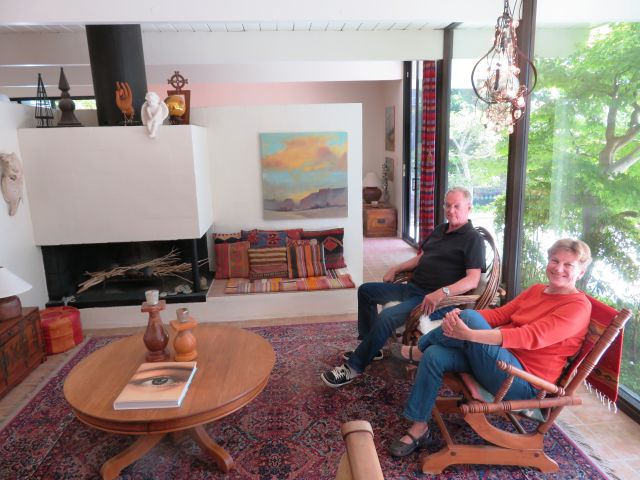 |
|
|
Throughout his career, Joe Eichler played up fine art as a partner to his fine homebuilding, nowhere more so than in his 'Art About the House' display in a 1954 Palo Alto model home.
Artist Matt Kahn, ceramicist Ernie Kim, and artist Anne Knorr, among others showed their artwork in the home. Eichler promotional material, seeking to appeal to what today are called 'creatives,' sometimes showed artists at work in their Eichler homes.
Apparently the advertising worked, because from the start and continuing today, many artists live and work in Eichler homes – including in the San Mateo Highlands.
Nancy Woods, one of those artists, ticks off just some of them: Linda Salter, Ellen Anne Chong and her husband Gary, Yvonne Newhouse, and Nancee McDonell. Some have their studios nearby at the Peninsula Museum of Art in Burlingame.
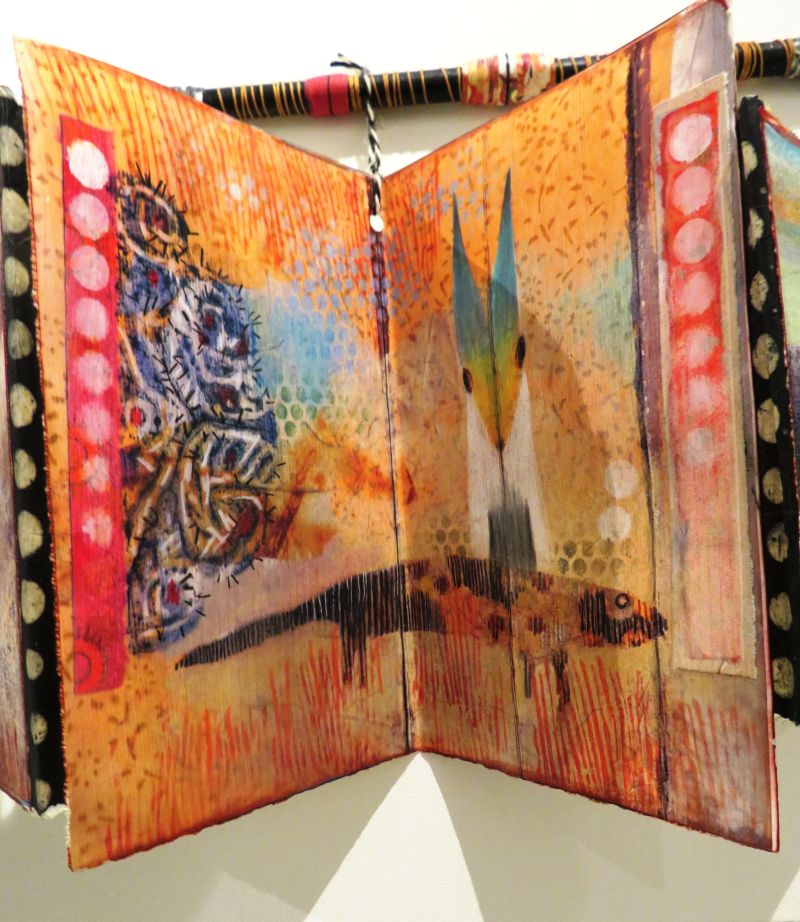 |
|
|
Let’s focus for now on one artist whose studio is in her home, not at the Peninsula Museum, but who has a small but imagery-packed exhibit of her work there. The exhibit, ‘Deb Rumer – Seeking Story,’ runs to July 29 and is well worth seeing.
Rumer is showing her very personal artists books, many based on her dreams, and many inspired by, and created during, her journeys. She doesn’t show them often – and doesn’t sell them at all.
“It would be difficult to market these [books], because they are so personal,” she says. “They’re just like my children.” For the exhibit, she unbound several of the books and displayed them accordion-style so people can see every page. She sees them as stories.
Over the years she has not shown her art very often, but did produce the major ofrenda at the Oakland Museum’s famous 'Day of the Dead' exhibit about a decade ago.
Why books?
“They’re intimate,” she says. “I can make them while I’m traveling, in a hotel or a house that we rent. Also, I like the idea of story.”
The Peninsula Museum, a rambling space with several exhibition spaces and many artist studios, is at 1777 California Drive in the rear of a commercial building.
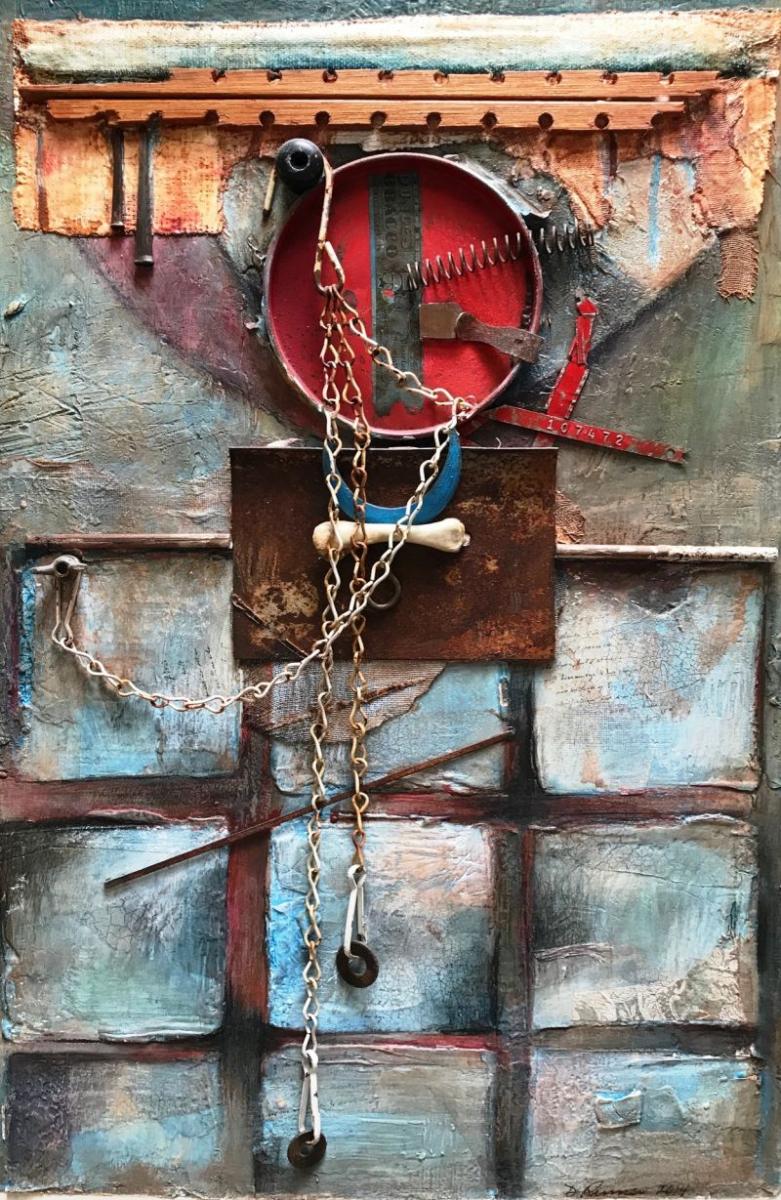 |
|
|
It’s hard to imagine another artist, even one who lives in the Highlands, whose life and home better represents the Eichler artistic ethos than Deb Rumer
That’s because Deb has turned not only her one-room home studio into a place for art, but has turned the entire house and garden into a live-in artwork.
“I do it all day long,” Deb says of her art making, “because I do it in the garden, I do it in the studio, I do it ‘playing house,’ in the arrangement of things, since we’re collectors.”
The house Deb shares with her husband, Bill Cogswell, a retired sheriff’s deputy, is also the house she grew up in.
She lived there till the start of the 1970s, when her family rented the home out. She and Bill moved back in in 1975, and bought it from her parents two years later. She and Bill had just started house hunting when her parents suggested the sale. “We didn’t think twice when they offered it,” Deb says.
Deb says several other kids she has known since childhood still live in the tract as well.
It’s clear that Deb enjoys continuity. Not only has she lived in one home for most of her life, she enjoyed stability in employment too. For 39 years, retiring three years ago, she taught art at the College of San Mateo, where she’d studied before getting her masters at San Jose State.
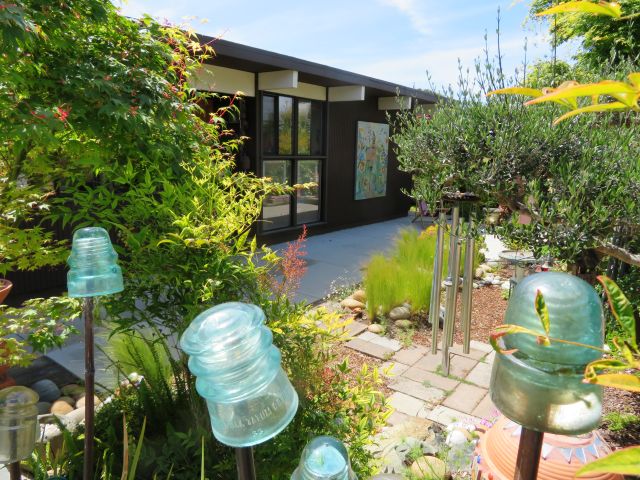 |
|
|
Deb taught part-time, and taught every semester. “It was perfect for raising kids,” she says.
Asked about the high point of her artistic career, Deb replies, “My students, without question.” Many have become artists and many remain friends.
When her parents bought the family Eichler, Deb’s mother picked the un-built lot, with a view towards Crystal Springs Reservoir, and the family was one of the first to move in, back in 1956. It was a remote, tree-less area then, and one major access road flooded when Crystal Springs let its waters flow.
She recalls a friendly neighborhood, where parents formed an after-school enrichment program. Kids would attend classes in several subjects at various people’s homes. It remains a vital community, and Deb plays a large part, serving on the recreation board and as grand marshal of the July 4th parade. She also created murals for the community rec center.
Also evidence of continuity is the way Deb has turned the home into an artwork, the patience it takes, the way she incorporates objects that she and Bill have collected over the years in unique compositions.
Does it surprise you that their 'Toy Room' is filled with toys that she kept from her girlhood? And that Bill kept from his boyhood?
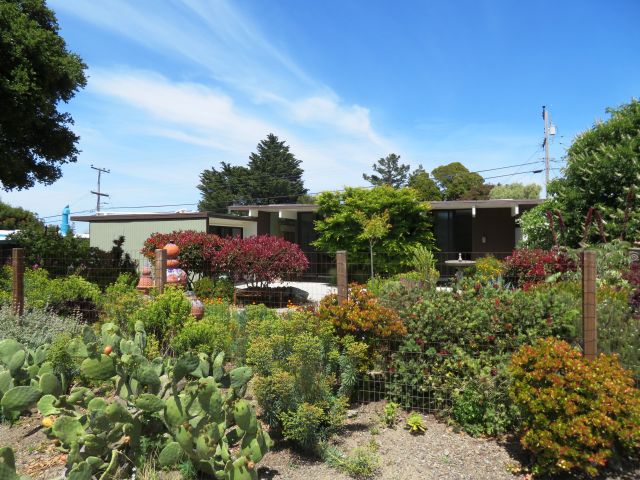 |
|
|
Their front yard is approached through a forest of bamboo stakes holding glass insulators from power poles, many of which Deb and her brother accumulated when children. The long mosaic wall in the backyard glistens in sunlight. “It took her five years to do that,” Bill says of the wall.
Throughout are large terra cotta constructions she calls “hoodoos” for their resemblance to the geological formations in Bryce Canyon National Park. Deb enjoys working in the garden, she says, because “it’s where I’m not into dos and don’ts, and I just let things happen.”
Inside the house, souvenirs the couple has collected from travels to Cuba and Europe, among other spots, can be enjoyed alongside her paintings and collages. “I’ve always done all kinds of work,” Deb says.
Frequent themes of Deb's art include birds, fish, fish with wings, architecture, and houses. The houses in her art do not recall Eichler homes – though she has portrayed her garden in her art. Still, she cites living in an Eichler as an influence on her art.
“Composition. Balance. Geometry. Light,” she says, counting off virtues of Eichler design. “In a composition, the basic bones have to be good. If they’re not good, whatever you put on top of them won’t work.
“It doesn’t seem like it,” Deb says, “but at my heart I’m a minimalist.”
For more about Deb Rumer’s art, contact [email protected].
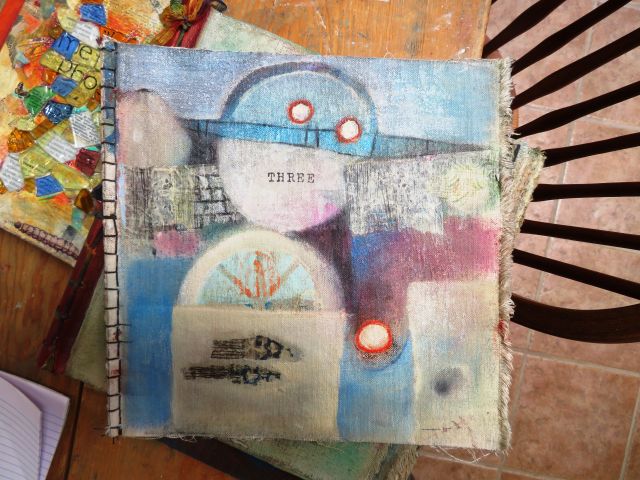 |
|
|
- ‹ previous
- 4 of 677
- next ›



